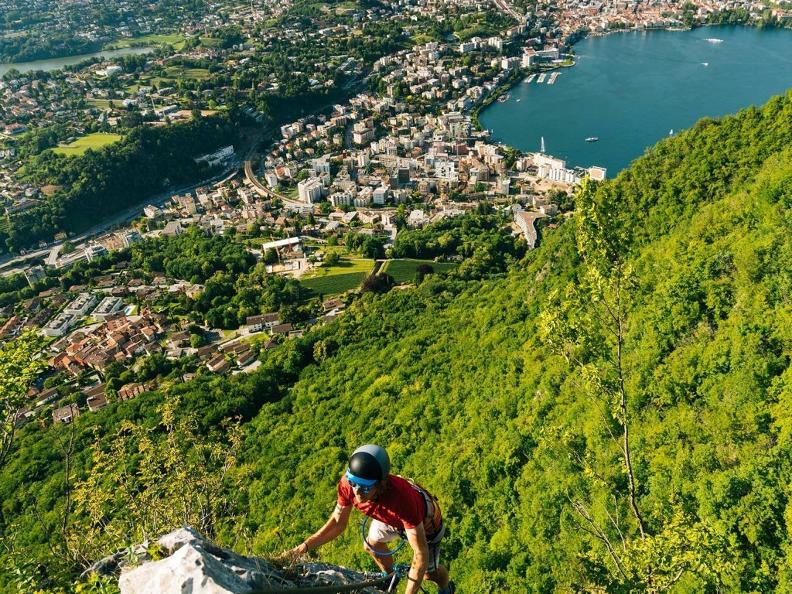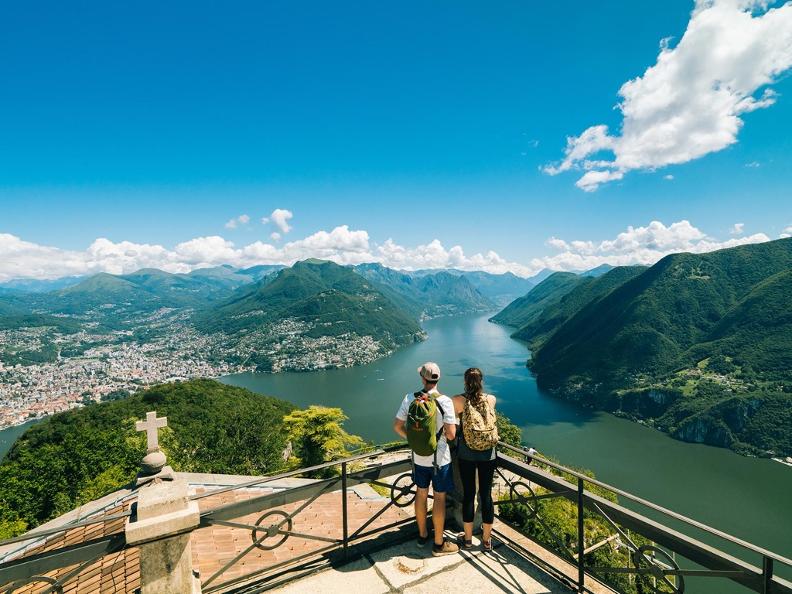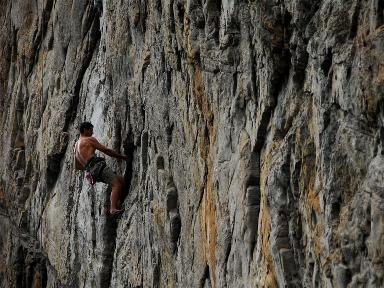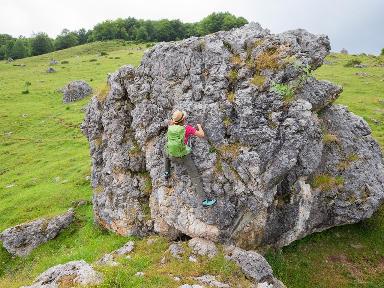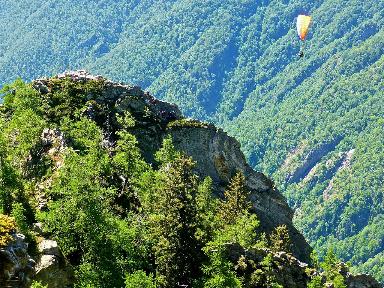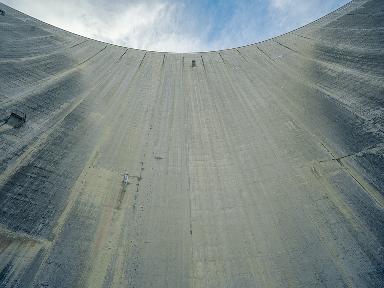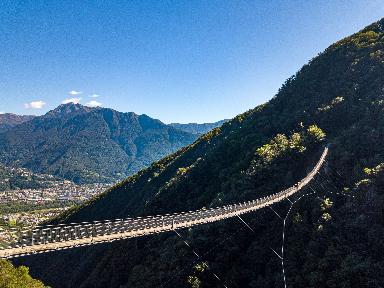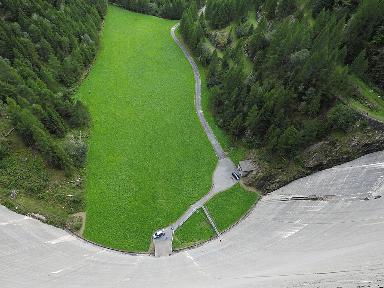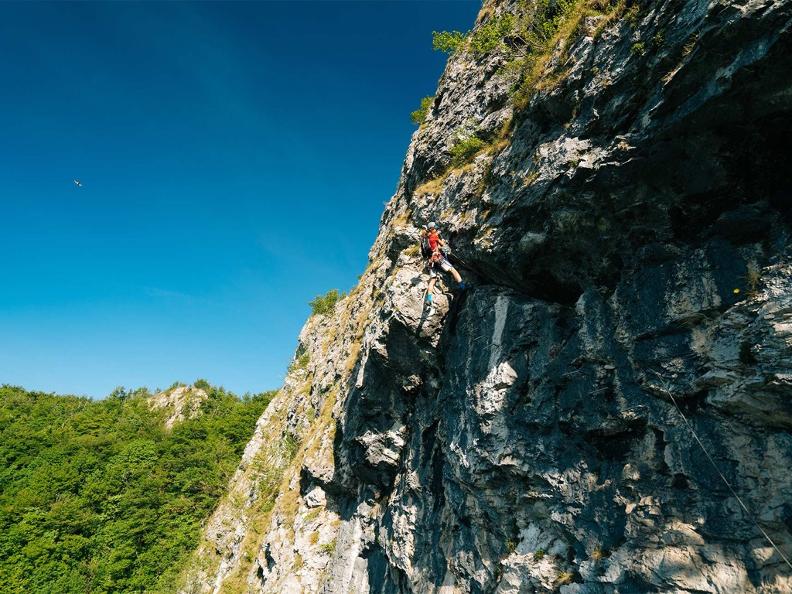
From the mountain top, you can descend down along the hiking trails that lead to Ciona/Carona/Melide/Morcote or to Pazzallo and Paradiso. They wind their way through an unspoiled and regenerating landscape with several lookout points offering magnificent panoramic views. More experienced and braver mountain climbers, with the right equipment, will be tempted to climb the exclusive “via ferrata”.
The “Dolomite type” steel path of San Salvatore
The route takes you across the north-west rock face, covering an elevation gain of around 150 metres, left of the funicular track.
The route is over 250 metres long and is challenging; those who decide to try it need to be strong and in good shape. The climb is not a straight line, but is fun and varied and its exceptional position offers superb views.
A steep path leads from the intermediate funicular station (at Pazzallo) to the start of the via ferrata, requiring around 50 minutes. From the end of the via ferrata, you can choose whether to take the beautiful path down to Pazzallo, or climb on up to the summit, which takes around 20 minutes, to the funicular departure point.
Technical components of the San Salvatore steel path
- Anchors: around 80 pieces, length 40 cm, diameter 20 mm. Made of STAINLESS STEEL; advantages: uniform strength and deformation, plus they do not deteriorate with exposure to the elements. Chemically bonded; advantage: greater duration since infiltration between anchor and rock is prevented.
- Cable: approx. 250 metres, diameter 13 mm with breaking load 11000 kg.
- Secured every 4-5 metres.
- Steps: approx.60 pieces, diameter 20 mm. Made of STAINLESS STEEL.
Personal equipment
- Harness, shock-absorbing lanyard with purpose-designed karabiners and a helmet.
Features
- VENUES Climbing , Eco-friendly
